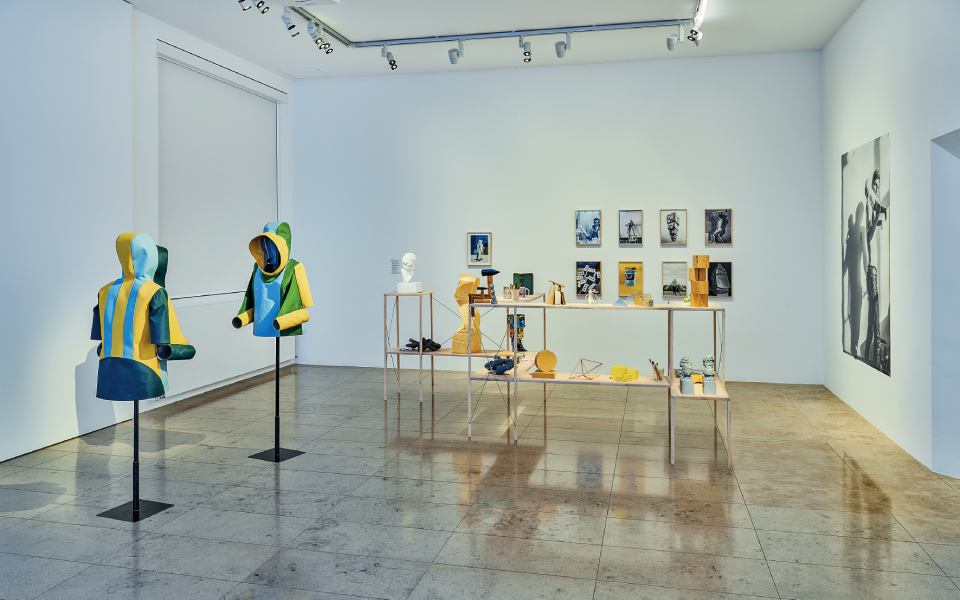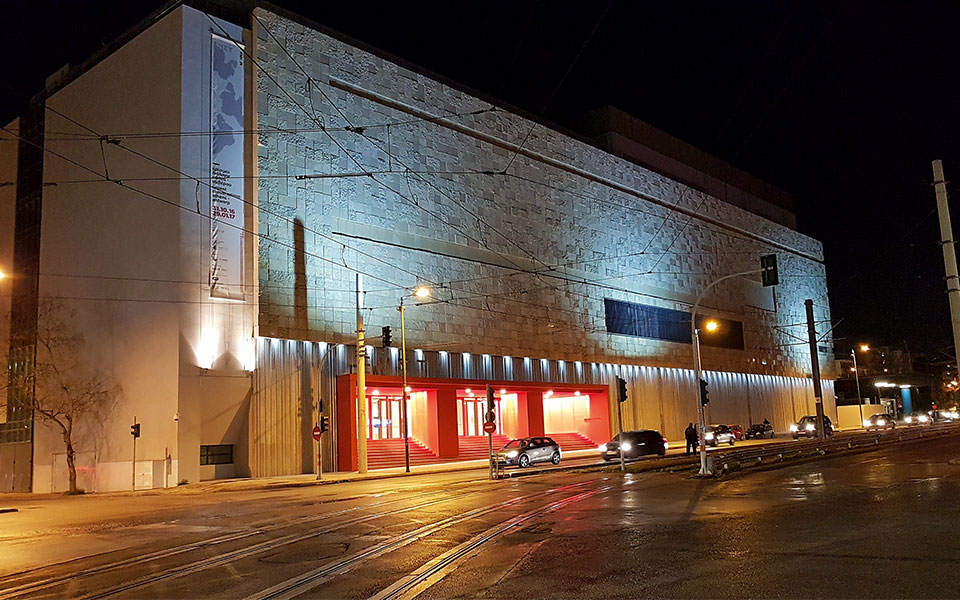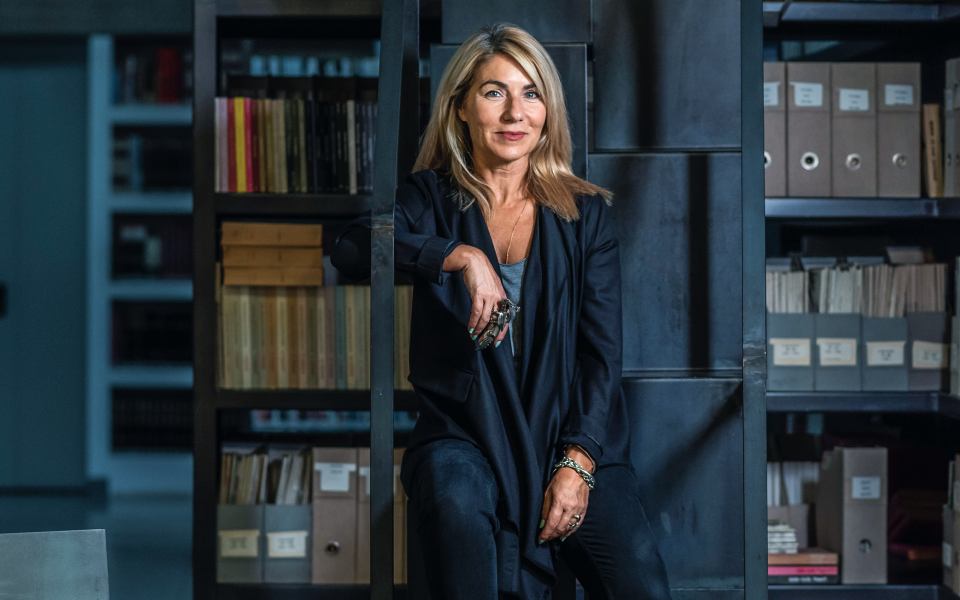Katerina Gregos is one of the few Greek curators with a substantial international career.
She has curated numerous major international exhibitions and nine international biennales, including Manifesta 9 and the Göteborg International Biennial. She has also curated the critically acclaimed National Pavilions of Denmark (2011), Belgium (2015) and Croatia (2019) at the Venice Biennale. Recently, she became the founding artistic director of the 1st Riga International Biennial (RIBOCA1). Since 2016, she has been the curator of the Schwarz Foundation’s visual arts program.
In the autumn, she opened a new exhibition entitled “Modern Love: or Love in the Age of Cold Intimacies” at the Museum für Neue Kunst in Freiburg, an exhibition which will travel to Tallinn and Utrecht. And she’s currently completing a blueprint for the future of the National Museum of Contemporary Art (EMST).
Her Greek roots and international experience make her ideal for an assessment of the Athenian artistic scene and its place in the international context.
How do you see the Greek visual arts landscape today? How do large private and public institutions, EMST, the National Gallery, commercial galleries, private collections and independent project spaces interact, if indeed they interact at all?
In Greece, we aren’t accustomed to working collectively and collaboratively and we still haven’t realized that strength lies in unity. As long as this territorial mentality exists, we won’t be able to make a mark outside of our borders. Today, in a time of crisis, collaboration is a must. The situation for the arts in Greece is not perfect – far from it – but there is a critical mass of institutions (private, public and non-profit). A concerted effort to collaborate and to share know-how would make everyone stronger.
The government could, perhaps, make more effort in better promoting these institutions and contemporary culture as a whole in Greece. Athens needs to re-brand itself not only as a destination for antiquities but also for contemporary culture; it’s the perfect moment to do this, now that there is an increased interest in Athens as a tourist destination per se. Greece can also potentially also benefit economically from a growing international audience interested in cultural tourism.
There is no better ambassador for a country’s prestige than culture. However, this needs a coordinated vision and collaboration between the city, the Ministry of Tourism, the Ministry of Culture and the private sector. One positive step forward has been the establishment of the General Secretariat for Contemporary Culture in the Ministry of Culture, which happened only recently (in 2019), whereby the state finally ‘officially’ acknowledged the importance of the sector.
Over the last decade, Athens has often been proclaimed the “new Berlin”. It has been presented as an exciting, cosmopolitan and somewhat exotic up-and-coming international art center. Is there any truth to this?
I’d say this is a wildly exaggerated, unsubstantiated claim. Those who promote this kind of hype probably do not know the reality in the city, as well as the multiple difficulties the field of contemporary art faces. For years, they’ve been saying the same about Brussels – since I moved there in 2006, and it never happened).
Athens cannot be compared to Berlin; it has nowhere near the same number of international artists and galleries, nor comparable institutions and museums. The only thing that Berlin and Athens have in common is that they are on the periphery; Berlin is at the edges of Europe, as is Athens. It will take a very long time for Athens to become a major art capital like Berlin; for this, you need a varied, widespread international art scene comprised of artists, curators, gallerists, museums, institutions – private and public – and, of course, an eager and large audience, which in Greece is still relatively small, since no emphasis has ever been placed on contemporary culture until recently. And you need a good support system for cultural workers, which still doesn’t exist yet in Greece.
Athens does have a lot of things going for it, not least of all good artists, creative non-profit spaces, great energy and, most of all, an extremely rich urban fabric and history, which artists should be addressing more. This is one of the ways that a real genuine interest in the Athenian art scene might be generated, and not through media hype or copycat art, as is so often the case in so many peripheral capitals.
One thing that is true, though, is that Berlin is on the decline; the edgy energy it once had has disappeared with gentrification. Athens, on the other hand, perpetually edgy, has enormous untapped potential. It could become a European art destination, but for this, you need a concerted strategy and vision on a public level, and, of course, financial support. Art cannot thrive on good intentions alone.
Athens does have a lot of things going for it, not least of all good artists, creative non-profit spaces, great energy and, most of all, an extremely rich urban fabric

© Bernhard Strauss
What should be the role of a contemporary art museum today in Greece? What could be the identity of EMST and the vision for its operation?
The identity and vision of a museum are the essence of its being. I will not talk about EMST specifically, but generally about museums that aren’t located in metropolitan centers and were not formed during the era of modernism in the 20th century. For me, the era of the globalized ‘one-size-fits-all’ museum is over. The art world has expanded so much it’s impossible for any institution to follow all the international developments. Museums today need to focus; otherwise, they risk being a heterogeneous mess.
A museum is first and foremost about its artistic vision, the discourse it produces, and the stance it takes vis-a-vis the art world and society at large. It isn’t about bricks and mortar, huge spaces and designer buildings – this is a mistake so many countries or cities have made. Museums without meaningful content have no reason to exist. Museums that have distinguished themselves in history are those with a distinct vision.
A museum needs to address, first and foremost, the place and space in which it is situated, not only nationally but also geographically and geopolitically. In Greece, we certainly do not need another Tate, MoMA, Guggenheim or Pompidou. We have neither the means nor the collections. Besides, these museums seem to be in an identity crisis. The neoliberal model of growth they’ve adopted has trapped them financially and taken away necessary freedoms.
In Greece, we need something that reflects our own position and concerns – always in a dialogue with the outside world. It’s a model that should reflect our own histories and cultural identities (but certainly not in nationalist terms). I strongly believe in the educational role of museums, and the fact that they can be important centers of alternative knowledge production and critical thought.
And, of course, they should be places where one sees inspiring, memorable art – because even that is becoming more and more challenging today in the era of the hyperinflation of images..

One of the most interesting phenomena of recent years has been the creation of many independent art spaces, managed by young artists and curators. What are the prospects of all this? Is it sustainable in the long run? Is it aimed at a wider audience or is it mainly about the art world itself?
I totally agree that this is one of the most interesting aspects of “crisis Greece.” However, when there’s no structural funding (from government, private foundations and the like) this model is unsustainable, demoralizing and exhausting for the cultural workers who work against all odds to articulate an artistic vision.
I have enormous respect for all these small spaces that are run by energetic, enthusiastic, hardworking artists and curators in very difficult conditions. They form an important aspect of Athens’ contemporary ecosystem and they should be supported more. It’s very difficult to address a larger audience when you’re operating on a shoestring budget and don’t have the resources to invest in publicity and community outreach.
So, by default, these spaces are doomed to address themselves to a small audience. And this is also one of the issues we need to address strategically in the long term; the audience for contemporary visual art in Athens is still very small. It will take a lot of work in terms of audience development and education to expand it.
What is Greece’s place on the international art scene today? Is extroversion something we focus on? Should it be?
I hate to say it, but apart from a handful of artists who’ve managed to make a name for themselves abroad and in Greece, we are nowhere. Greek artists are mostly invisible outside the country’s borders – at the last Istanbul Bienniale, which is literally next door, there wasn’t a single Greek artist! My international colleagues often find it difficult to name more than two or three Greek artists at best.
This is the result of a long-term lack of public arts policy, lack of funding, lack of production money, and lack of an arts council. Artists from Greece will never be able to gain the visibility they deserve unless there’s a systematic policy and long-term support of their work. In Belgium, for example, artists receive money to cover some basic annual expenses in order to focus on their work. In Greece, on the other hand, it is almost impossible for a visual artist to live off their work. So they’re forced to do various unrelated jobs, and many artists choose to leave because they know – no matter how tough, and competitive, cities like Berlin, Paris, London, Amsterdam, New York are – they’ll have more opportunities.
In order for this disadvantageous situation to improve, we’d need something akin to the Acción Cultural Española (Spain), the Mondriaan Fund (Netherlands), OCA (Norway) or IASPIS (Sweden), mainly publicly funded institutions with a view to the long-term promotion of art.
In addition to funding artists with the aim of increasing their international visibility, they also work towards getting foreign professionals to visit their respective countries to get to know the arts scene and the artists. I’ve been invited countless times by similar organizations and, thanks to them, I’ve discovered the work of many artists, whom I’ve later supported and shown in different exhibitions.
Of course we should be concerned about “extroversion”! Artistic practice is de facto extrovert – artists create works in order to engage with the public. It’s one of the main driving forces for an artist and a vital component of art.












